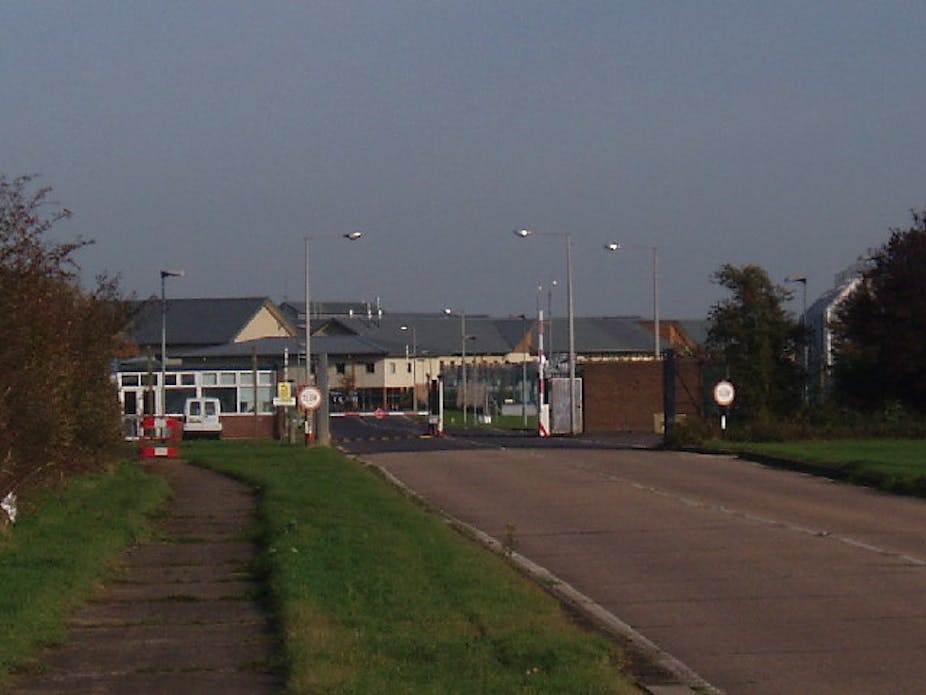Late in 2013 Lib Dem MP, Sarah Teather, challenged the government to ensure that any reports into allegations of sexual assault at Yarl’s Wood detention centre compiled by private operators Serco are made public.
Teather’s demand followed a stream of allegations from former detainees that people held in detention had been subject to inappropriate sexual contact with staff. One woman claimed attempts were made to deport her within days of her informing Yarl’s Wood’s management of the incidents. She also said that one security guard had “inappropriate” relations with at least four women.
We need only scratch the surface of the asylum system in Britain to see that violence has become integral to the way we treat those seeking refuge. Detention without criminal charge, dispersal, destitution, and fear of deportation are central to the lives of those seeking asylum here. As recent reports indicate, violence against female refugees is often sexualised – including sexual abuse, sex trafficking, and so-called “transactional sex”.
It has been an awkward few years for the Home Office and UK Border Agency (UKBA), which was abolished in spring 2013. UKBA was long berated by right-wing commentators who complained it did not keep enough immigrants out and failed to closely monitor those who did make it here – but human rights organisations have produced ample evidence that the British state’s methods of immigration control, including detention and dispersal, can seriously affect the mental and physical health of asylum seekers.
The recent death of Christine Case is the 14th death in an Immigration Removal Centre (IRC) in the past 10 years. Emma Mlotshwa, co-ordinator of the campaign group Medical Justice, responded by saying: “The only thing we are surprised about is that there have not been more deaths.”
Rendered vulnerable by the state
In general, detained and incarcerated people can be made vulnerable to physical and sexual abuse. Their vulnerability often arises from the unequal distribution of power between the incarcerated and those charged with securing them. Particular issues arise in holding women in detention, since women are disproportionately victims of sexual abuse in society more generally. These specifically include the potential for re-traumatisation based on earlier instances of sexual abuse and torture, and the threat of further sexual abuse.
Women for Refugee Women’s latest report, Detained, found that of 46 female interviewees who had been held in detention in the UK, 33 had been raped in their home country. In its earlier 2012 report, Refused, 66% of the women in the sample had experienced gender-based violence, and 32% of those women had previously been raped by soldiers, police or prison guards.
When I interview medical doctors, support workers or psychologists about the impacts of sexual violence on women seeking asylum, I often find a recognition that many women have left countries where sexual violence in detention is endemic, or where rape is widely used as a weapon of war – and from this, the assumption arises that they have made it to safety. As one interviewee once commented: “They don’t trust police or prison guards here because they don’t know it is different to their own country.”
After allegations of sexual abuse at Yarl’s Wood were made last year, the Home Office – as enforcer of border controls – was widely condemned over, but the outsourced management of the IRC to Serco allowed the government to put some distance between itself and the guards’ abuse.
Yet the government is not wholly innocent. Of course, there are individuals’ accountable for perpetrating sexual violence against women in Yarl’s Wood, and not all guards abuse their power in this way. Private security companies have received criticism for various other abuses. But it was government policy that allowed for women to be detained in situations that made them vulnerable to a specific kind of sexual violence.
Wall of silence
It was the Home Office that’s first response was not to gather evidence and move forward to hold those accountable, but to deport witnesses to their country of origin. It was the Home Office that moved to silence women survivors of, and witnesses to, sexual abuse.
Survivors of sexual violence are often faced with a wall of silence, be it through social stigma, shame or fear of reporting. Add to this a perpetrator who has the power to detain, restrain, search or report you, and who can exploit a fear of forced return to the country you have fled. It is a braver woman than I who stands up to this level of state power.
Women in Yarl’s Wood face indefinite detention, forced removal, use of restraint, roll call four times a day – and the threat or use of sexual violence. More broadly, and as already discussed, dispersal has been shown to impact on women’s safety in relation to trafficking, sexual exploitation, and even perinatal care.
Women who have fled domestic and/or sexual violence, conflict-related sexual abuse, female genital mutilation or so-called honour-based violence, live in fear of forced return to their country of origin and the persecution that they migrated from in the first place.
Thus, when we speak of state violence, or teach younger generations about violent governments and institutions, we should not limit our attention to other countries in other times. We need only look at our own government’s treatment of those seeking political or economic refuge – survivors of torture, sexual violence, and persecution – to see state power manifest as degrading, dehumanising violence.
A conference in Liverpool on May 16 – How Violent is Britain?– will examine this issue in detail. This is part of a series of articles on this theme on The Conversation.

